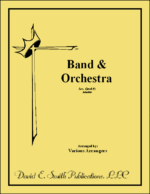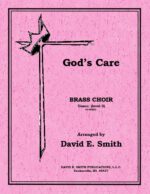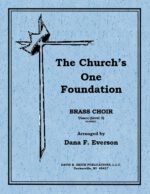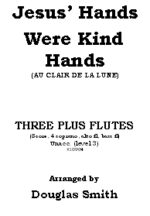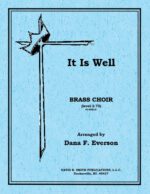| Instrument | |
|---|---|
| Level | 3 |
| Writer | |
| Publisher |

16 Bach Chorales Clarinet II
$4.99
For concert band and/or orchestra
Related products
-
Go Tell/Mountain (band acc)
$35.00A band accompaniment for the woodwind solo based on the piano accompaniment found in the solo/piano version. It comes with four woodwind solo lines as well as a full band set. The piece’s counterpoint features the combination of both themes of the tune at the same time.
-
God’s Care
$10.00(3-tpt, 2-hn, 2-tmb, BH, tba): God Be With You; God Leads Us Along; God Will Take Care of You; We Have An Anchor
-
-
Come, Thou Long-Expected Jesus
$11.00Three Plus Flutes for three soprano with opt. 4th/ob. with alto and bass. The begins with the tune in the upper line and then shifted to activity in the inner lines. And then back to the voicing of the beginning, coming to a solid conclusion.
-
Jesus’ Hands Were Kind Hands
$11.00Three Plus Flutes for three soprano with opt. 4th/ob. with alto and bass & piccolo. The first phrase is stated in the top voice, then adding the second voice, further adding the third voice until all voices are in agreement. The next section moves in a rather jaunty motion going through various meter changes. The middle section is stated with the tune in the top voice with accompaniment figures presented in a syncopated manner. All this happening in a modulated key. Further modulation takes place with a motive stated in the second voice, followed the third, then first until it settles into a final statement of kindness.
-
It Is Well
$12.00Brass choir scored for four trumpets (opt horn) two trombones, baritone BC/TC and tuba. This entire piece is one of serenity, gentleness and great affect. The introduction is in the lower voices producing a rich sound and sense of expectation. The trumpets add in on the melody with long lines of expression, and then the lower voices offer a response in like manner. The next section increases in movement and dynamic until it modulates to a new key center. The phrases now alternate between the low voices in an almost antiphonal fashion. Another modulation elevates the urgency of the piece and the trumpets carry the entire load throughout this section. The rest of the instruments then bolster the ensemble giving increased strength. The pieces quiets and becomes reflective and then settles with an “all is well.”
-
Through The Love Of Christ, Our Saviour
$11.00Three Plus Flutes for three soprano with opt. 4th/ob. with alto and bass. Opening with the upper two parts and then adding the lower voices gravitating to a block harmonic structure. The middle section starts with lower voices using a extraneous motif and stacked with upper voices doing the same in imitation. Then with more vigor all voices join in block harmonies until the final section where again imitation takes place until the final block harmonies take place.
-
I Want Jesus To Walk With Me
$11.00Three Plus Flutes for three soprano with opt. 4th/ob. with alto and bass. A beginning that is yearning in emotion and subtle shifts in harmonic and linear lines. A modulation to a higher tessitura in strong block chords gives a feeling of strength. The piece then settles back into the original key with a series of imitation of the various parts. The piece becomes more solemn as the pitch levels drop until settling into a final cadence.

